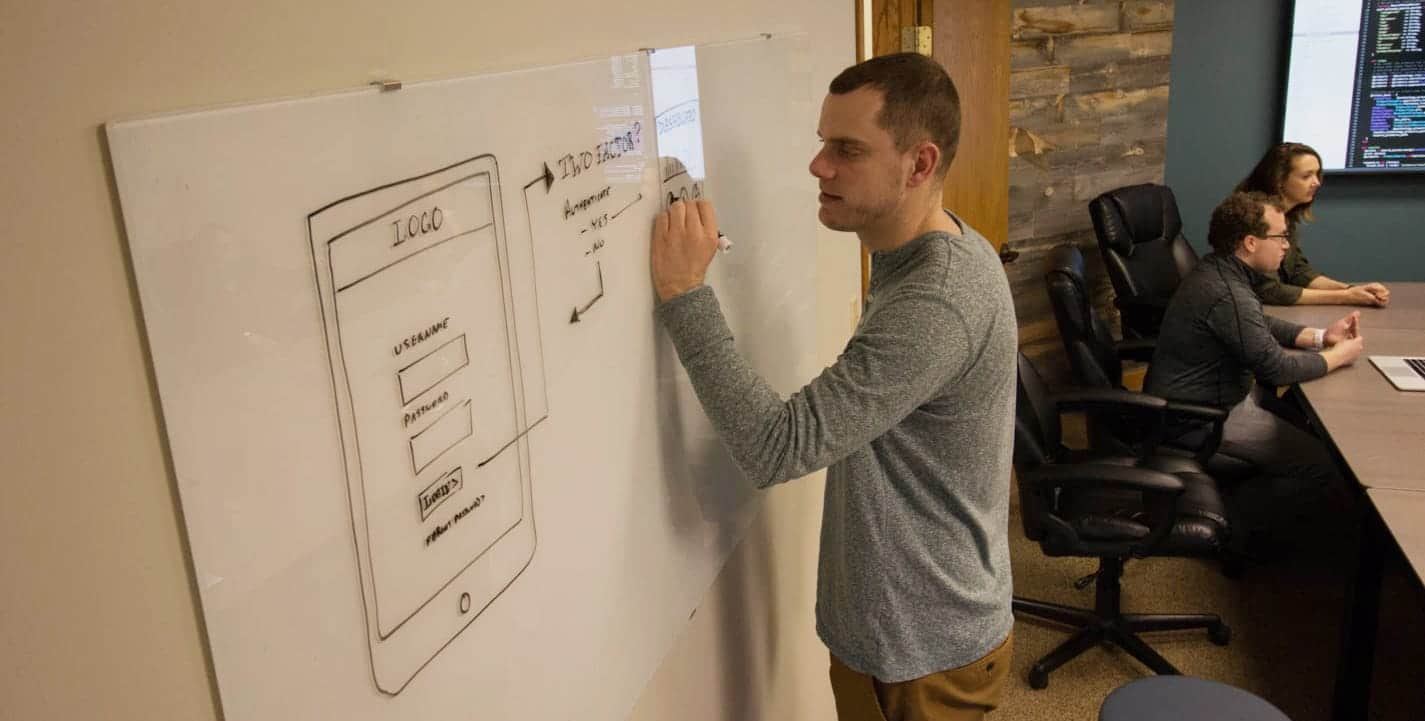
“Do you think this is a good idea?”
“Would anyone pay for this service?”
“How much revenue will my new online product generate?”
As a consulting company, our clients ask us questions like these all the time. Usually it’s after they’ve had a flash of inspiration about a brand new product or service idea. They have all this enthusiasm but no idea if it would actually make sense as a viable business, which is understandable. It’s very hard to predict exactly how imaginary customers will react to your imaginary product. However, there is a way to get quick, valuable feedback about your idea without spending a huge amount of time or money. It’s called a Minimum-Viable-Product, or MVP.
You can think of an MVP as the barebones version or “essence” of your product or service, without being the full-blown thing. It should have just enough features to get your point across or test your idea, but nothing more. The goal of an MVP is to validate your core concept or idea on a shoestring budget. This allows you to test many different ideas quickly without breaking the bank. Let’s look at an example:
Minimum Viable Product Example: A Professional Resume Critiquing Service
You want to build a website where anyone can upload their resume and receive 5 professional critiques to help them improve their odds of landing that perfect job. The person would upload a digital file directly on the website, and within 24 hours they’d have 5 professional critiques waiting for them to view on the website. They can also go through two rounds of question and answer with each reviewer to further clarify their feedback. You’d like to charge money for this service, but you’re not sure how to determine a price. Ideally, you think the payment should be handled online, so that everything is processed as quickly as possible in order to maintain that 24 hour turnaround promise.
The Traditional Approach
The traditional approach would be to hire a few software developers and graphic designers, along with at least 5 additional people to perform the critiques. The developers and designers would spend a few months building the site, implementing features and making it look visually appealing. Your developers would spend a lot of time making sure the site automated as much of the workflow as possible, sending out emails, processing payments, handling critiques and comments back and forth, maintaining user accounts, etc. It might take you 6 months before you have something online and are capable of signing up that first customer.
The MVP Approach
Remember, the goal of an MVP is to validate your core concept or idea on a shoestring budget. Rather than hiring anyone, you could tackle 100% of this yourself, at least in the beginning. Let’s see how that might work:
- Create a basic 1-3 page website yourself, using a free tool like Google Sites.
- Rather than a resume upload feature, just ask people to email their resume to you (you can handle email, right?).
- Advertise and market your service as if it existed!
- Display a button on your page that says “Click here to receive 5 professional critiques on your resume for only $5”
- When they click on the button, display a page that says something like, “This one’s on us! You’ve qualified for a free critique. Send your resume to [email protected] to receive 5 professional critiques within 24 hours”.
- This way, you can get some idea of a price point without having to setup any payment processing (which takes time and costs money). People who clicked on the button were at least willing to part with $5 to use your service, even though they didn’t actually enter their credit card. It’s an approximation, but it’s quick and free!
- Watch your email inbox like a hawk.
- When you receive a new resume:
- Do the 5 professional critiques yourself, providing different feedback on each one.
- Reply to your customer via email and include their 5 critiques along with a message that you’re happy to answer any questions they have.
That should be enough to validate your idea! Of course this approach is not sustainable once your start getting more customers, but at least you’ll know you have an idea worth pursuing further. Once you start seeing real proof that you’re on to something, you can confidently hire a few developers and designers to improve and expand the website and add some writers to tackle the critiques. It only took a small amount of sweat equity to give you the confidence you need to jump into your new business with both feet.
The key is to start asking, “What is the simplest thing I can do to test my idea?” You can always add the whiz-bang features later. It won’t matter how fancy it looks or how many features it has if the core concept is flawed (or no one is interested in it).
The example above pertains to launching a new online service, but the MVP way of thinking can be applied to other areas of business as well. At Web Ascender, for example, we were curious if any of our employees would use one of those newfangled standing desks. You can spend anywhere from $500 to $1500 on a standing desk, and we didn’t want to waste our money. However, we have a section in the back of our office that has a long countertop on top of some cabinets (an old kitchenette area). We simply put down a few mouse pads and LCD monitors and whoila! Standing desks! It turns out that quite a few people here have starting using them, so we may be investing in some real standing desks in the near future.
Always think big, but start with an MVP!
